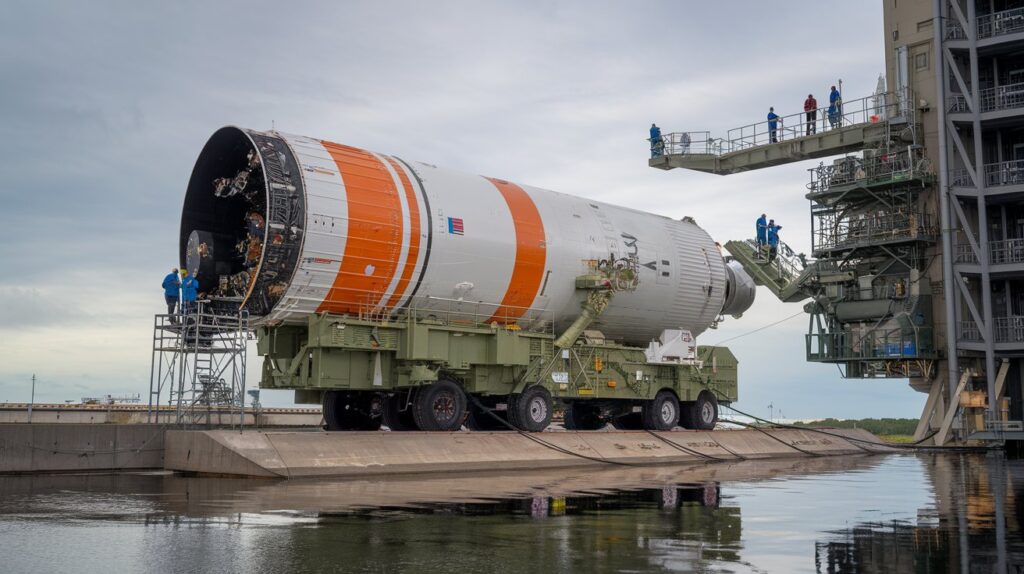1. Introduction
The satellite launch vehicle industry is experiencing rapid transformation due to advancements in technology, growing private-sector involvement, and increasing government investments in space exploration. The market, valued at $15.7 billion in 2022, is projected to reach $29.1 billion by 2027, growing at a CAGR of 13.1%. With the rise of reusable launch vehicles, small satellite deployments, and commercial space initiatives, the industry is set to revolutionize global space access. This report explores the emerging trends shaping the satellite launch vehicle industry and their impact on the global market.
Download PDF Brochure @
https://www.marketsandmarkets.com/pdfdownloadNew.asp?id=115959224

2. The Shift Towards Reusable Launch Vehicles
One of the most significant trends in the industry is the increasing adoption of reusable launch vehicles. Companies like SpaceX, Blue Origin, and Rocket Lab are pioneering this technology, reducing launch costs and improving turnaround times. Reusable rockets such as SpaceX’s Falcon 9 and Starship, as well as Blue Origin’s New Shepard, have demonstrated the ability to conduct multiple missions without requiring complete reconstruction. This trend is expected to make spaceflight more accessible and drive further commercial investments in satellite launches.
3. The Rise of Small Satellite Launch Vehicles
The demand for small satellites has surged, driven by advancements in communication, Earth observation, and remote sensing applications. Companies are responding by developing dedicated small launch vehicles to cater to this growing market. Rocket Lab’s Electron, Astra’s Rocket 4, and Firefly Aerospace’s Alpha are examples of small launchers designed for rapid and cost-effective satellite deployment. As satellite constellations expand, the need for more flexible and frequent launch services is driving the growth of this segment.
4. Growth in Commercial Space Launch Services
The increasing participation of private companies in space launch services is reshaping the industry. SpaceX, Blue Origin, and Relativity Space are leading the charge in commercial launches, offering cost-effective alternatives to government-funded programs. The rise of dedicated commercial launch providers enables companies and research institutions to deploy satellites without relying on government-backed missions. This trend is opening new opportunities for industries such as telecommunications, Earth monitoring, and navigation services.
5. Expanding Investments in Space Infrastructure
Governments worldwide are ramping up investments in space infrastructure, including satellite networks, launch sites, and mission control centers. Countries such as the United States, China, India, and Russia are strengthening their space capabilities through increased funding for research, development, and innovation in launch vehicle technologies. The expansion of spaceports and satellite integration facilities in regions like North America, Europe, and Asia-Pacific reflects the growing interest in independent space launch capabilities.
6. Advancements in Green Propulsion and Sustainable Technologies
The satellite launch vehicle industry is also moving toward environmentally friendly propulsion systems. Companies are investing in green propellants, such as liquid methane and biofuels, to reduce the carbon footprint of rocket launches. SpaceX’s Raptor engine, which runs on methane and oxygen, is an example of a step toward sustainability. Additionally, developments in electric and hybrid propulsion technologies are being explored to make satellite deployment more efficient and eco-friendly.
7. Asia-Pacific’s Emerging Dominance in Space Launch Capabilities
The Asia-Pacific region is becoming a major hub for satellite launches, with China, India, and Japan leading space missions. China’s Long March series, India’s PSLV and GSLV programs, and Japan’s H3 rocket are positioning these nations as key players in the global launch vehicle industry. Smaller Asian countries such as South Korea and Indonesia are also making strategic moves to enter the commercial space launch market. The growing investments in satellite launch capabilities within this region are expected to enhance global competition in space exploration.
8. Integration of Artificial Intelligence and Automation in Launch Systems
The integration of artificial intelligence (AI) and automation in satellite launch vehicles is enhancing mission efficiency and reliability. AI-driven analytics are improving flight path optimization, anomaly detection, and predictive maintenance of launch systems. Automated launch facilities and self-diagnosing rocket engines are increasing the success rate of launches while reducing operational costs. This trend is expected to further accelerate the development of smarter and more autonomous space launch vehicles.
9. The Future of Space Tourism and Human Spaceflight
The satellite launch vehicle industry is also intersecting with the rise of space tourism and human spaceflight. Companies like Virgin Galactic, Blue Origin, and SpaceX are developing launch vehicles capable of carrying private passengers into space. The demand for commercial space travel is expected to grow, creating new business models for satellite launch providers. The development of crewed spacecraft and next-generation space stations will further drive innovation in launch vehicle technology.
Ask for Sample Report @
https://www.marketsandmarkets.com/requestsampleNew.asp?id=115959224
10. Future Outlook
The satellite launch vehicle industry is undergoing significant changes, driven by technological advancements, increasing private-sector investments, and global competition. The shift toward reusable rockets, the rise of small satellite launch vehicles, and the expansion of commercial space services are key trends shaping the future of the industry. Investments in sustainable propulsion, AI-driven automation, and space tourism are expected to drive further growth in the market. As more nations and companies enter the space race, the industry will continue to evolve, unlocking new opportunities for exploration, communication, and commercial ventures.